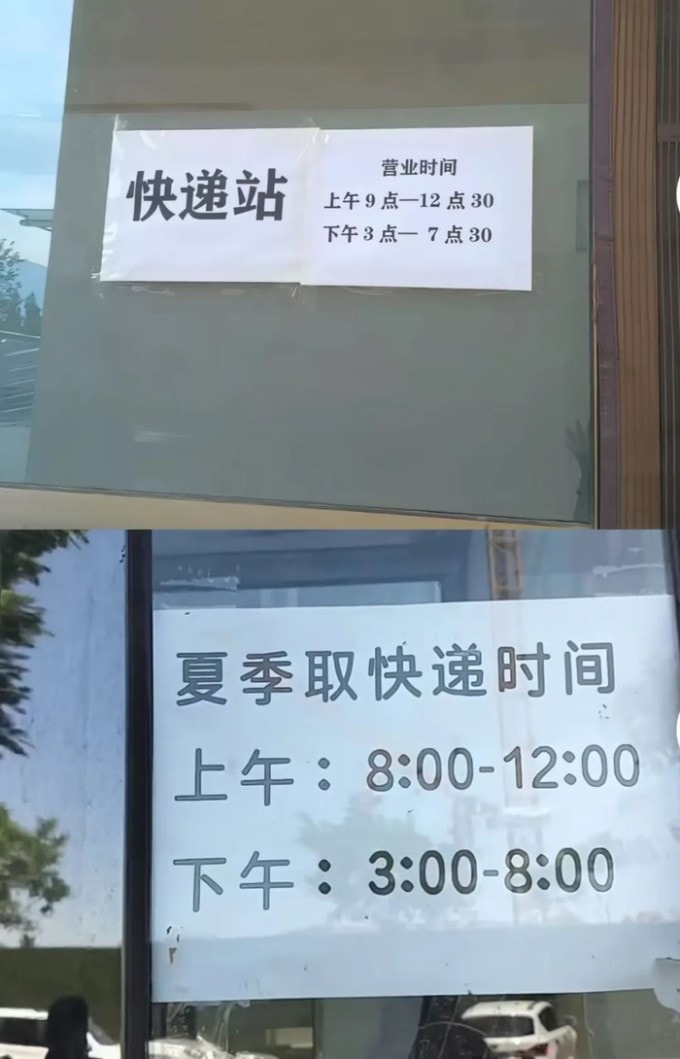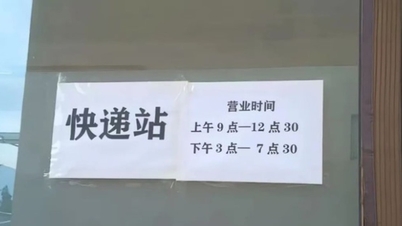The city falls into a siesta
Many first-time visitors to China’s Shanxi Province are surprised to see how the bustling city suddenly becomes strangely quiet at midday. From around 12:00 to 15:00, almost all activities come to a halt to make way for an important custom: the siesta.
According to the "2022 China Healthy Sleep Survey", Shanxi leads the country with 63.9% of residents maintaining the habit of napping. Locals regard this period as "big noon", an indispensable part of daily life. The time frame can change according to the season, usually from 12:00 to 14:30 in winter and extending to 15:00 in summer.

On the streets, it is not difficult to see "lunch break, please do not disturb" signs hanging in front of shops and restaurants. Inside, employees can sleep right on the table or any convenient space. One shop owner shared: "The mornings are very busy, if we don't take a nap, we won't have enough energy to serve customers in the evening."
Unique visitor experiences
This siesta culture affects every aspect of life, from food service to delivery. Some travelers have described having their orders canceled at 2 p.m. because the restaurant was sleeping, or having to wait until the evening to receive their orders. Delivery drivers have even stacked packages into “fortresses” to have a quiet place to rest.

For those who come for work, scheduling needs to be flexible. A social media user shared: "I arrived in Thai Nguyen (Son Tay province) at 1:30 p.m. to meet a partner and found the whole office, including the leaders, were sleeping. My advice is not to make an appointment before 4 p.m."
The seriousness of this culture is also reflected in the education system, where primary school students need to have a parent's signature confirming that they have "taken a nap". Even tourist attractions such as the Imperial Citadel of Xiangfu have arranged a separate area for visitors to experience a nap like a local.

Explaining cultural characteristics
According to Finance Sina, the deep-rooted habit of taking a nap in Son Tay originates from three main factors:
1. Geography and history
Son Tay is located on the Loess Plateau, with a dry climate and a large temperature difference between day and night. In the past, agricultural and mining work was physically demanding, making a midday rest a necessity to restore energy.
2. Local cuisine
Shanxi is known as the "noodle capital" of China. Noodle dishes such as knife noodles and tijian noodles are rich in carbohydrates, are digested quickly, and cause a sudden increase in blood sugar levels, causing drowsiness. Many tourists admit: "After eating a bowl of noodles in Shanxi, I understand why they need to take a nap."
3. Industrial lifestyle
As a province with a developed coal mining industry and many state-owned enterprises, most workers live near their workplaces. This makes it convenient for them to return home for a rest at noon. This habit has been maintained for many generations and gradually becomes an inseparable part of cultural identity.

Tips for travelers
When visiting Son Tay, visitors should plan their sightseeing and shopping activities in the morning or after 3pm. Consider the quiet time in the afternoon as an opportunity to experience a different pace of life, relax at the hotel or find an open cafe to rest and observe local life slowly.
Source: https://baodanang.vn/son-tay-kham-pha-tinh-thanh-ngu-trua-3-tieng-moi-ngay-3310748.html













































































































Comment (0)